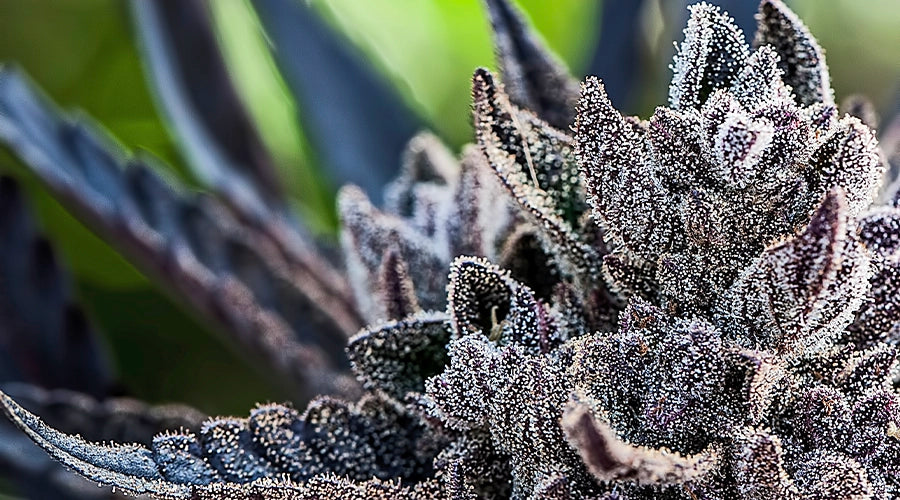
The Complexities of Cannabis Flower
The Complexities of Cannabis: A Comprehensive Overview of its History, Uses, Effects, and Regulation
Cannabis, also known as marijuana, is a plant that has been used for thousands of years for both medicinal and recreational purposes. Its flower, which is part of the plant that contains the most significant amounts of active compounds, has been the subject of much debate and research in recent years. In this essay, we will explore the history of cannabis, its uses, and its effects on the human body.
Cannabis has a long history of use, with evidence of its cultivation dating back to at least the third millennium BCE in China. Over the centuries, it has been used for various purposes, including as a medicinal plant, for its fiber, and for its psychoactive properties. In the 20th century, the use of cannabis became controversial, and many countries made its use illegal. In recent years, however, there has been a resurgence of interest in the plant, and many countries have legalized its use for medicinal purposes, while others have legalized its use for recreational purposes as well.
The flower of the cannabis plant contains the highest concentrations of active compounds, including tetrahydrocannabinol (THC) and cannabidiol (CBD). THC is the primary psychoactive compound in the plant, and it is responsible for the “high” that is associated with its use. CBD, on the other hand, is a non-psychoactive compound that has been shown to have medicinal properties, including reducing anxiety, pain, and inflammation.
It is also worth mentioning that there are different strains of cannabis, each with its unique properties and effects. For example, some strains have higher concentrations of THC and are used for their psychoactive effects, while others have higher concentrations of CBD and are used for their medicinal properties.

The Diverse Landscape of Cannabis: Medicinal Properties
When it comes to the effects of cannabis on the human body, there is a growing body of evidence to suggest that it has numerous benefits. For example, it has been shown to be an effective treatment for chronic pain, and it can also help to reduce symptoms of anxiety and depression. In addition, it has been shown to be an effective treatment for certain neurological conditions, such as epilepsy, and it can also help to reduce the symptoms of multiple sclerosis.
Despite its potential benefits, however, there are also some potential risks associated with the use of cannabis. For example, long-term use of the plant can lead to cognitive impairment, and it can also increase the risk of mental health problems, such as schizophrenia and depression. In addition, the use of cannabis can also impair judgment and coordination, which can lead to accidents and injuries.
Furthermore, the use of cannabis flowers has also raised concerns about its impact on the environment. The production of cannabis requires large amounts of water and energy, which can put a strain on natural resources, particularly in regions where water is scarce. Additionally, the use of pesticides and other chemicals in the cultivation of cannabis can also harm the environment and wildlife.
Another issue to consider is the potential for abuse and addiction associated with the use of cannabis. While many people can use the plant responsibly, some people may develop a dependence on it, and this can lead to problematic use and negative impacts on their lives. It is essential to understand the potential risks associated with the use of cannabis and to use it responsibly.
Another concern is the lack of regulation and standardization of cannabis products. With the legalization of cannabis in many countries, the market for cannabis products has exploded, and there is a wide variety of products available. However, there is often a lack of consistency in the quality and potency of these products, and this can make it difficult for consumers to know what they are getting. It is essential for governments to establish regulations to ensure that the products available are safe, consistent, and of high quality.
The Wonders and Challenges of Cannabis
In addition to its medicinal properties, cannabis is also widely used for recreational purposes. In many countries, including the United States, the legalization of cannabis for recreational use has resulted in the creation of a new industry, with the growth, sale, and distribution of cannabis and its derivatives becoming a significant economic driver.
Despite its widespread use, however, there is still much that is not known about the effects of cannabis on the human body. As a result, there has been a growing interest in research into the plant and its effects, with the aim of gaining a deeper understanding of how it works and how it can be used safely and effectively.
Breaking Down the Barriers of Cannabis: Uses and Regulations
Another important aspect to consider with regard to the use of cannabis is the issue of regulation. With the legalization of cannabis for medicinal and/or recreational use in many countries, there has been a growing need for regulation to ensure the safety of consumers. This includes the regulation of the quality and potency of the cannabis products that are available, as well as the regulation of the methods of consumption and the labeling of products.
The regulation also plays a crucial role in preventing the use of cannabis by minors, as well as in preventing the abuse and overuse of the plant. In addition, regulation can help to ensure that the benefits of cannabis are realized while minimizing the potential risks and negative consequences associated with its use.
It is also worth mentioning that there is still a significant amount of stigma surrounding the use of cannabis, especially in countries where it is not yet legalized. This stigma is often based on misinformation and a lack of understanding about the plant and its effects. It is important to address this stigma and to educate the public about the potential benefits and risks associated with the use of cannabis.
It is also important to consider the issue of access to cannabis for those who could benefit from its use for medicinal purposes. In many countries, access to medical cannabis is still limited, and there is a need for greater access and affordability for those who could benefit from its use.
It is important to approach the use of cannabis with an open mind and a willingness to learn, and to use the plant responsibly and in accordance with the laws and regulations in your area.
Finally, cannabis is a plant with a long history of use, and its flower is part of the plant that contains the most significant amounts of active compounds. While there is a growing body of evidence to suggest that it has numerous benefits, including its use as a treatment for various medical conditions, it is important to be aware of the potential risks associated with its use, including cognitive impairment and the increased risk of mental health problems.
Further research is needed to fully understand the effects of cannabis on the human body and to determine the best ways to use it for medicinal and recreational purposes.
As with any substance, it is essential to use cannabis responsibly and to consult with a healthcare provider before using it to treat any medical condition.
